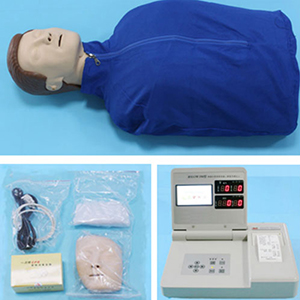14-11-2024
ADA MED SUPPLY LIMITED
Article tag: Semi-computer CPR simulator CPR model
In the field of medical emergency, cardiopulmonary resuscitation (CPR) is a vital skill that requires paramedics and first responders to be proficient and to respond quickly and accurately in emergency situations. To enhance this skill, a computerized CPR simulator has been developed that not only simulates real CPR scenarios, but also provides continuous training support to the user.
First of all, the half computer CPR simulator has a high degree of simulation. The combination of its half-body model and computer digital display can simulate the real operating environment of cardiopulmonary resuscitation. Structures such as skin, bones and internal organs have been carefully designed to maximize the feel and response of the real human body. This allows the user to feel a similar experience to the real operation when training, thus deepening the understanding and mastery of CPR skills.

Secondly, simulators have a variety of training modes, which can meet the training needs of different levels. Both beginners and experienced health care professionals can be trained through simulators. The training mode can include basic training, simulation assessment and actual combat exercise, and users can choose the appropriate training mode according to their actual situation. In addition, simulators can provide real-time feedback and guidance based on the user's actions, helping users correct mistakes and improve their skills.
Most importantly, the ability to provide ongoing training support. The simulator can record the user's training data, including key indicators such as the number of presses, the depth of presses, and the amount of blow, and display and analyze it through a computer digital display. Users can find out the existing problems and make targeted improvements according to their own training data. In addition, the simulator can be regularly updated with training content and standards to ensure that the user always has the latest CPR skills.
To sum up, the half computer CPR simulator does provide continuous training support. It not only simulates real CPR scenarios, but also helps users improve their skills through multiple training modes and real-time feedback mechanisms. At the same time, the simulator can also record and analyze the user's training data, and provide the user with personalized training suggestions and improvement plans.